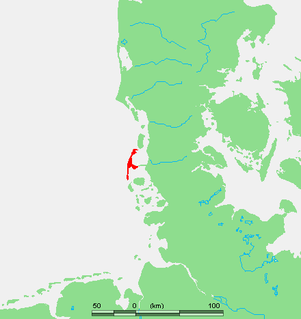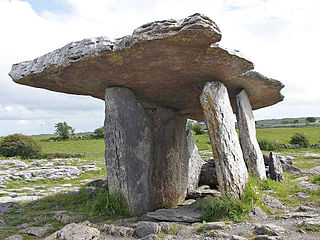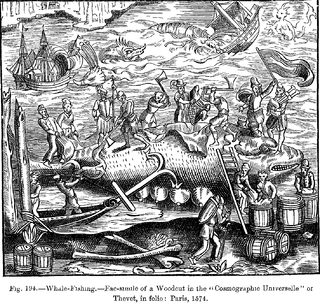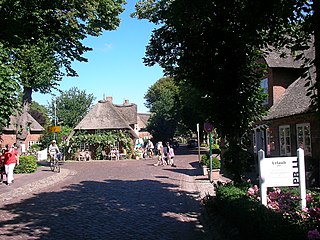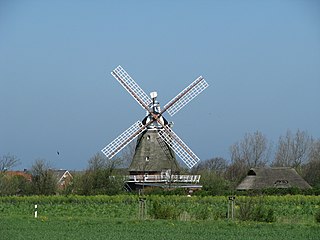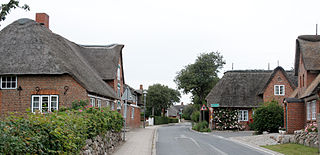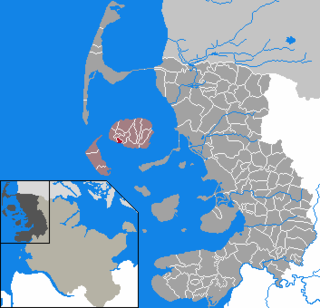Utersum Ödersem / Yttersum | |
|---|---|
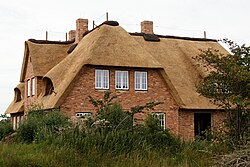 A thatched house in Utersum | |
| Coordinates: 54°43′N8°24′E / 54.717°N 8.400°E Coordinates: 54°43′N8°24′E / 54.717°N 8.400°E | |
| Country | Germany |
| State | Schleswig-Holstein |
| District | Nordfriesland |
| Municipal assoc. | Föhr-Amrum |
| Government | |
| • Mayor | Göntje Schwab |
| Area | |
| • Total | 5.26 km2 (2.03 sq mi) |
| Elevation | 3 m (10 ft) |
| Population (2016-12-31) [1] | |
| • Total | 414 |
| • Density | 79/km2 (200/sq mi) |
| Time zone | CET/CEST (UTC+1/+2) |
| Postal codes | 25938 |
| Dialling codes | 04683 |
| Vehicle registration | NF |
| Website | www.utersum.de |
Utersum (Fering North Frisian: Ödersem, Danish : Yttersum) is a municipality on the island of Föhr, in the district of Nordfriesland, in Schleswig-Holstein, Germany. The municipality includes the hamlet of Hedehusum.
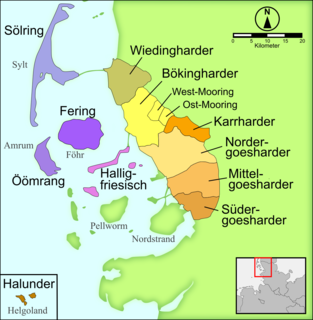
Fering is the dialect of North Frisian spoken on the island of Föhr in the German region of North Frisia. Fering refers to the Fering Frisian name of Föhr, Feer. Together with the Öömrang, Söl'ring, and Heligolandic dialects, it forms part of the insular group of North Frisian dialects and it is very similar to Öömrang.

North Frisian is a minority language of Germany, spoken by about 10,000 people in North Frisia. The language is part of the larger group of the West Germanic Frisian languages. The language comprises 10 dialects which are themselves divided into an insular and a mainland group.

Danish is a North Germanic language spoken by around six million people, principally in Denmark and in the region of Southern Schleswig in northern Germany, where it has minority language status. Also, minor Danish-speaking communities are found in Norway, Sweden, Spain, the United States, Canada, Brazil, and Argentina. Due to immigration and language shift in urban areas, around 15–20% of the population of Greenland speak Danish as their first language.




